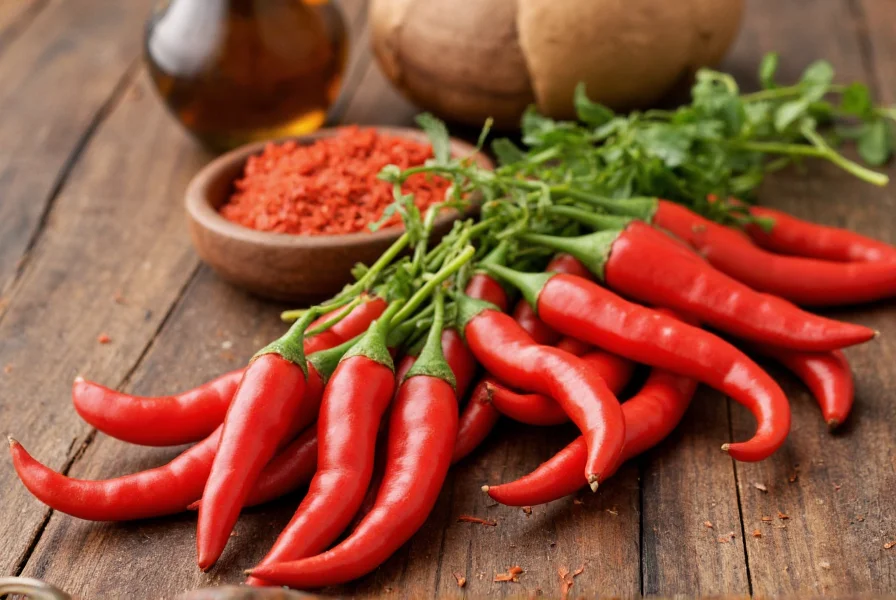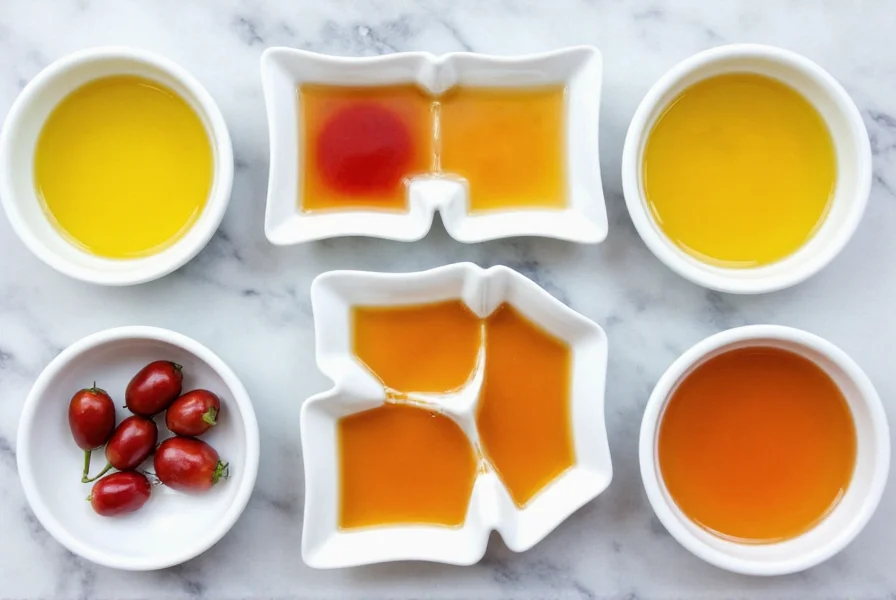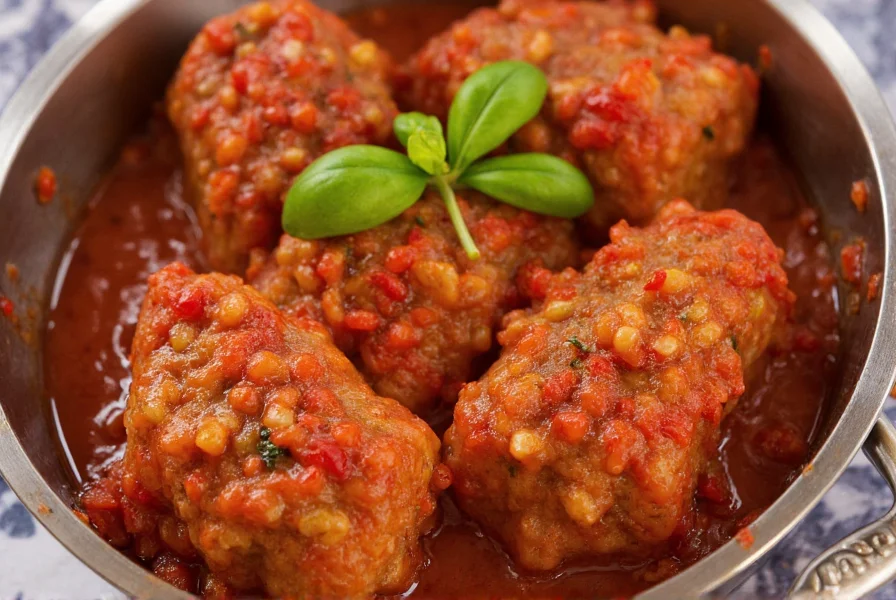When you're in the middle of cooking and realize you've run out of chili oil, knowing reliable alternatives can save your recipe. Chili oil's unique combination of heat, aromatic spices, and oil base makes it challenging to replace perfectly, but several kitchen staples can effectively mimic its flavor profile in various applications.
Understanding Chili Oil's Flavor Profile
Before selecting a substitute, it's essential to understand what makes chili oil distinctive. Traditional chili oil combines:
- Heat from dried chilies (varying by region and brand)
- Subtle sweetness from caramelized aromatics
- Complex spice notes from Sichuan peppercorns or other seasonings
- An oil base that carries and distributes flavors
When searching for what to use instead of chili oil, consider which elements matter most for your specific recipe. Some dishes need primarily the heat component, while others rely on the aromatic oil base.
Top Practical Substitutes for Chili Oil
Here are the most effective alternatives, with guidance on when to use each option based on your cooking needs.
Hot Sauce and Neutral Oil Blend
For recipes where you need both heat and oil content, combine your favorite hot sauce with a neutral oil like canola or vegetable oil in a 1:1 ratio. This chili oil substitute for recipes works particularly well for:
- Stir-fries where you need to distribute heat evenly
- Dressing noodles or rice dishes
- Marinades that require both liquid and heat
Adjust the ratio based on your hot sauce's intensity—milder sauces may need less oil.

Crushed Red Pepper Flakes Steeped in Oil
Create a simple infused oil by heating 2 tablespoons of neutral oil with 1-2 teaspoons of crushed red pepper flakes for 5-7 minutes over low heat. Remove from heat and let steep for 15 minutes before using. This best alternative to chili oil for cooking delivers:
- Authentic chili flavor without vinegar notes
- Adjustable heat level based on steeping time
- Oil base that carries flavors like traditional chili oil
This substitute works exceptionally well for pizza, pasta dishes, and as a dipping oil.
Sriracha and Sesame Oil Combination
Mix sriracha and toasted sesame oil in a 2:1 ratio for an Asian-inspired substitute. The sriracha provides garlic-forward heat while the sesame oil contributes nuttiness and depth. This combination serves as an excellent chili oil replacement for Asian recipes when:
- You need both heat and umami elements
- Creating dipping sauces or dressings
- Finishing dishes that benefit from sesame notes
| Substitute | Best For | Ratio | Flavor Notes |
|---|---|---|---|
| Hot sauce + neutral oil | Stir-fries, marinades | 1:1 | Vinegary heat, varies by sauce |
| Crushed red pepper + oil | Pizza, pasta, dipping | 1-2 tsp per 2 tbsp oil | Clean chili flavor, no vinegar |
| Sriracha + sesame oil | Asian dishes, dressings | 2:1 | Garlicky with nutty finish |
| Paprika + cayenne oil | Color without extreme heat | 1 tsp paprika + pinch cayenne per tbsp oil | Smoky with controlled heat |
Specialized Substitutes for Specific Applications
Certain recipes demand more tailored approaches when you need a chili oil alternative for specific dishes.
For Noodle Dishes
When making lo mein or dan dan noodles, combine 1 tablespoon chili garlic sauce with 2 teaspoons sesame oil and 1 teaspoon rice vinegar. This mixture replicates the complex flavor profile needed for authentic noodle dishes when you're out of traditional chili oil.
For Pizza and Bread Dipping
Create a quick pizza chili oil by mixing 3 tablespoons olive oil with 1 teaspoon crushed red pepper flakes, 1 minced garlic clove, and a pinch of dried oregano. Heat gently for 3 minutes then remove from heat. This chili oil substitute for pizza delivers the perfect balance of heat and Italian flavors.
For Mild Heat Requirements
If your recipe calls for chili oil primarily for color and mild heat (not intense spiciness), blend 1 teaspoon sweet paprika with 1 tablespoon neutral oil and a tiny pinch of cayenne pepper. This alternative works well for dishes where you want the visual appeal of chili oil without overwhelming heat.

Common Mistakes to Avoid
When using substitutes for chili oil in cooking, watch out for these common pitfalls:
- Using straight hot sauce - This adds excessive vinegar that alters recipe balance
- Overheating infused oils - High heat burns chilies, creating bitter flavors
- Ignoring recipe context - Not all substitutes work equally well across all dishes
- Using the wrong oil base - Olive oil works for Mediterranean dishes but clashes with Asian recipes
Storage and Shelf Life of Homemade Substitutes
Most chili oil substitutes can be stored in airtight containers in the refrigerator for 1-2 weeks. Infused oil blends typically last longer than those containing fresh ingredients like garlic. Always check for signs of spoilage before using, especially with homemade versions that lack commercial preservatives.
Creating Your Own Custom Blend
For the most versatile chili oil replacement option for home cooking, try this customizable formula:
- Start with ¼ cup neutral oil (vegetable, canola, or grapeseed)
- Add 1-2 teaspoons of your preferred heat source (crushed red pepper, chili flakes, or hot sauce)
- Include ½ teaspoon of complementary flavor (sesame oil for Asian dishes, garlic for Italian)
- Heat gently for 3-5 minutes, then let steep off heat for 15 minutes
- Strain if desired, or leave solids for extra flavor
This approach lets you tailor the substitute precisely to your recipe's requirements.











 浙公网安备
33010002000092号
浙公网安备
33010002000092号 浙B2-20120091-4
浙B2-20120091-4